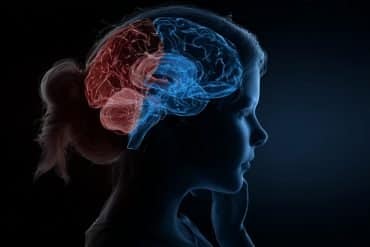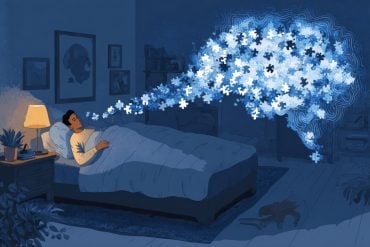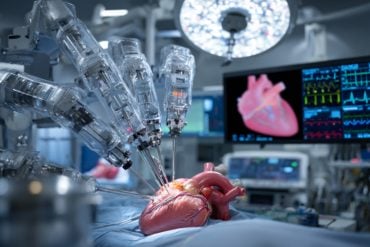HRL demonstrates the potential to enhance the human intellect’s existing capacity to learn new skills.
Dr. Matthew Phillips and his team of investigators from HRL’s Information & System Sciences Laboratory used transcranial direct current stimulation (tDCS) in order to improve learning and skill retention. “We measured the brain activity patterns of six commercial and military pilots, and then transmitted these patterns into novice subjects as they learned to pilot an airplane in a realistic flight simulator,” he says.
The study, published in the February 2016 issue of the journal Frontiers in Human Neuroscience, found that subjects who received brain stimulation via electrode-embedded head caps improved their piloting abilities. “We measured the average g-force of the plane during the simulated landing and compared it to control subjects who received a mock brain stimulation,” says Phillips.

While previous research has demonstrated that tDCS can both help patients more quickly recover from a stroke and boost a healthy person’s creativity, HRL’s study is one of the first to show that tDCS is effective in accelerating practical learning. Phillips speculates that the potential to increase learning with brain stimulation may make this form of accelerated learning commonplace. “As we discover more about optimizing, personalizing, and adapting brain stimulation protocols, we’ll likely see these technologies become routine in training and classroom environments,” he says. “It’s possible that brain stimulation could be implemented for classes like drivers’ training, SAT prep, and language learning.”
It’s a case of life imitating art. Much as the sci-fi film “The Matrix” depicted a device capable of enhancing skill acquisition, researchers at HRL Laboratories, LLC, have discovered that low-current electrical brain stimulation can modulate the learning of complex real-world skills.
HRL Laboratories, LLC, Malibu, California is a corporate research-and-development laboratory owned by The Boeing Company and General Motors specializing in research into sensors and materials, information and systems sciences, applied electromagnetics, and microelectronics. HRL provides custom research and development and performs additional R&D contract services for its LLC member companies, the U.S. government, and other commercial companies.
Source: Michele Durant – HRL Laboratories
Image Credit: Image is credited to HRL Laboratories.
Video Source: The video is credited to HRL Laboratories, LLC.
Original Research: Full open access research for “Transcranial Direct Current Stimulation Modulates Neuronal Activity and Learning in Pilot Training” by Jaehoon Choe, Brian A. Coffman, Dylan T. Bergstedt, Matthias D. Ziegler and Matthew E. Phillips in Frontiers in Human Neuroscience. Published online February 9 2016 doi:10.3389/fnhum.2016.00034
Abstract
Transcranial Direct Current Stimulation Modulates Neuronal Activity and Learning in Pilot Training
Skill acquisition requires distributed learning both within (online) and across (offline) days to consolidate experiences into newly learned abilities. In particular, piloting an aircraft requires skills developed from extensive training and practice. Here, we tested the hypothesis that transcranial direct current stimulation (tDCS) can modulate neuronal function to improve skill learning and performance during flight simulator training of aircraft landing procedures. Thirty-two right-handed participants consented to participate in four consecutive daily sessions of flight simulation training and received sham or anodal high-definition-tDCS to the right dorsolateral prefrontal cortex (DLPFC) or left motor cortex (M1) in a randomized, double-blind experiment. Continuous electroencephalography (EEG) and functional near infrared spectroscopy (fNIRS) were collected during flight simulation, n-back working memory, and resting-state assessments. tDCS of the right DLPFC increased midline-frontal theta-band activity in flight and n-back working memory training, confirming tDCS-related modulation of brain processes involved in executive function. This modulation corresponded to a significantly different online and offline learning rates for working memory accuracy and decreased inter-subject behavioral variability in flight and n-back tasks in the DLPFC stimulation group. Additionally, tDCS of left M1 increased parietal alpha power during flight tasks and tDCS to the right DLPFC increased midline frontal theta-band power during n-back and flight tasks. These results demonstrate a modulation of group variance in skill acquisition through an increasing in learned skill consistency in cognitive and real-world tasks with tDCS. Further, tDCS performance improvements corresponded to changes in electrophysiological and blood-oxygenation activity of the DLPFC and motor cortices, providing a stronger link between modulated neuronal function and behavior.
“Transcranial Direct Current Stimulation Modulates Neuronal Activity and Learning in Pilot Training” by Jaehoon Choe, Brian A. Coffman, Dylan T. Bergstedt, Matthias D. Ziegler and Matthew E. Phillips in Frontiers in Human Neuroscience. Published online February 9 2016 doi:10.3389/fnhum.2016.00034






